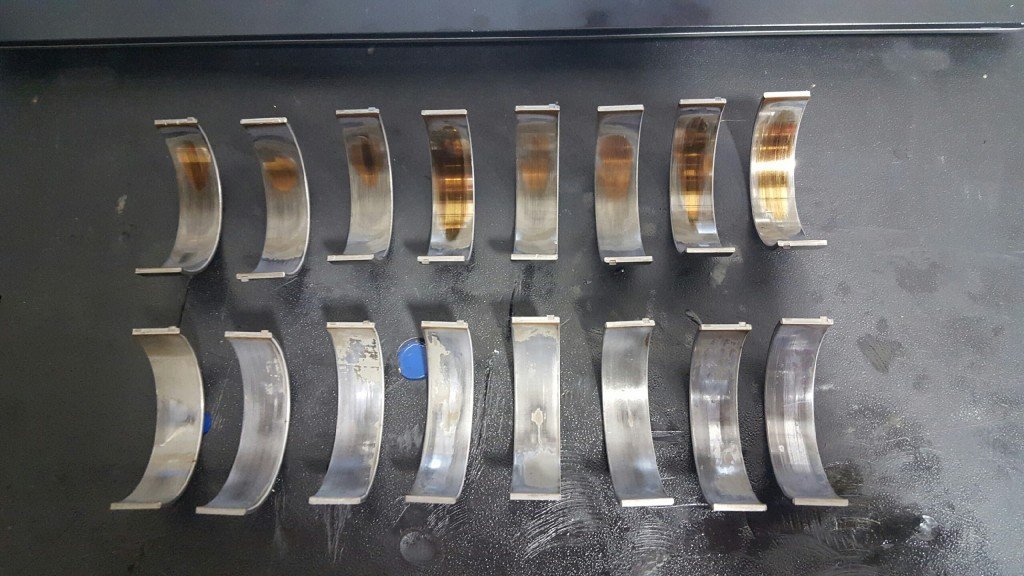If you’re looking for a step-by-step guide to replacing your Porsche 944’s rod bearings, you’ve come to the right place. Listed below are some of the common problems that you might face, how to identify them, and how to replace them. Read on for more information. If you have any questions, don’t hesitate to contact us. We’ll be happy to help!

Problems with rod bearings on a Porsche 944
Rod bearing failure is a common issue on a Porsche 944, and it’s a problem that’s not always easy to diagnose. Fortunately, the 944 is equipped with performance-oriented rod bearings. The problem of rod bearing failures is often caused by the failure of the main bearing, which is located centrally in the crankcase. The smaller outer diameter arm reduces oil starvation.
The problem is typically found in old cars, which are prone to engine failure. The good news is that rod bearing replacement on your Porsche 944 is incredibly cheap: about $60 for a set. This can easily be done while the engine is still in the car, as long as the motor has not spun yet. Besides rod bearings, there are other parts you need to pay attention to when it comes to your Porsche.
The bi-metal bearings are the least likely to fail, but there are other things to consider before making an appointment with a mechanic. Bi-metal bearings are better for engines with 500 to 600 HP. Bi-metal bearings are typically not available in high-performance variants. During hot-rodding, high-performance engines increase the load on upper rod bearings. These increased forces squeeze the oil film between the journal and the bearing shell. Over time, this leads to a cracked bearing shell.
Oil leaks at the rear of the engine are not always a symptom of a failed IMS bearing. Most oil leaks at the rear of the engine are caused by a problem with the RMS. It is possible to wait for the oil leak to subside and have the oil dripping onto the floor. Another common problem is a faulty IMS flange seal. If you suspect your Porsche is suffering from a failing IMS bearing, it is wise to consult a Porsche specialist.
The first step in a rod bearing rebuild is to disassemble the engine. Once disassembled, the bearings can be cleaned and inspected. A proper disassembly is the most important step. The bearing shells are also the most critical part of the engine, so make sure you have an accurate representation of the condition of your engine. Inspecting the shells of the bearings is a good way to determine their state of wear.
The oil feeds the rod journals through the main journal next to the crankshaft. Oil flows through the crankshaft journal to the rod journals. The rod journals also have a chamber that acts as a reservoir before the oil reaches the rod bearing. Therefore, you should check for wear and tear immediately after finding a problem. The process is easy and painless if you’re aware of the possible causes.
Causes
Rod bearings are one of the most frequently replaced parts on a Porsche 944. While this item is easily replaced, it is also a common wear item and requires replacement every season. If your engine is older, you can also reduce the risk of popping the dipstick o-ring and vacuum leaks by running extra oil. If you are unsure whether it’s time to replace the rod bearings, here are some reasons you should consider replacing them.
The oil supply to your engine is one of the primary reasons that your rod bearings wear out. This causes excessive play between the parts. If you ignore this problem, you may risk further damage to your engine. You should also check the oil level regularly. If your engine is running low on oil, it is highly likely that you need to replace the rod bearings. These parts can also become loose and jam.
When it comes to performance vehicles, rod bearings are of the highest importance. While the main bearings are not high-performance, they may be required for engines with more than 500 horsepower. Typically, the replacement of rod bearings can be accomplished with the same parts as the main bearings. Moreover, rod bearings take the most abuse in the engine. If you’re considering replacing your Porsche 944’s rod bearings, be sure to know what to look for.
In addition to ensuring that the bearings are seated properly, it’s important to keep the crank at Bottom Dead Center. You need to remove the rod cap bolts on the number one piston. Once the end cap is removed, the bottom half of the bearing is either on the end cap or still on the crank. Be careful not to damage the crank by pushing it up on the rod bolts. Replace the rod bearings with the new ones.
Often, you won’t have any visible symptoms while driving your car. However, you may be able to notice an oil leak at the rear of your engine. Most oil leaks are the result of the RMS. However, you can try to wait until it stops leaking oil and leaves oil deposits on the floor. If the oil leaks from the rear of the engine, it may be caused by a problem with the IMS flange seal. If you suspect that the RMS is failing, contact a Porsche specialist.
Old motors of the Porsche 944 can be prone to rod bearing failure. A new set of rod bearings costs less than $60, so if your car has been sitting for a while, it’s worth the effort. If you’re buying a used Porsche, check that it has a functioning water pump and timing belt. If you’re replacing a new engine, it’s also a good idea to replace the water pump.
Replacement
When you’re looking to replace the rod bearings in your Porsche 944, it’s important to know what you’re doing. The two most common reasons that rod bearings need to be replaced are wear and a lack of oil supply. The good news is that replacing them is a relatively simple procedure. If you’re unsure, here’s a quick guide:
Typically, the only bearing that can be substituted is the rod bearing. Main bearings are generally not available in high-performance variants. The problem with rod bearings is that they are exposed to extremely high loads, especially during high-RPM operations. Inertia loadings are greatest at TDC when the small end of the rod pulls out through the top of the engine. The resulting stress on the rods is often enough to cause them to stretch.
Older cars that are over 20 years old usually need the most repairs. The dashboard cracks, interior rips, and suspension wear are common problems. Replaced rod bearings can prevent this problem from occurring again. This repair is easy to perform and should not cost more than $60. If you’re buying a Porsche 944, it’s important to look at all of the other parts in the car, such as the water pump and timing belt.
If you’re planning to replace the rod bearings on your Porsche 944, you’ll want to know what to expect. Porsche engines are unique in that the rod bearings are raised off the crankshaft journal, and the oil feeds to them through the main journal. The main journals are also grooved, which means that they are elevated off the crankshaft. Regardless of which type of engine you have, you’ll want to check the rod journal condition and ensure that the oil is at the right level for the bearings.
Another important factor to consider when replacing the rod bearings on your Porsche is the oil level. If the oil level in your engine is low, you’re more likely to encounter problems with the bearings. Low oil pressure is one of the most common causes of rod bearing failures, and you may need to replace the crankshaft as well. It is also important to check the oil level, as low oil can cause severe damage to the bearings. First, disconnect the power steering hose. While removing the power steering hose, be sure not to loosen the sealing rings on the banjo bolt. Next, disconnect the lower steering u-joint by unscrewing a 13mm bolt. You can also locate it by following the steering rod down to the steering rack. If you find the lower steering u-joint, then you’re halfway there!

